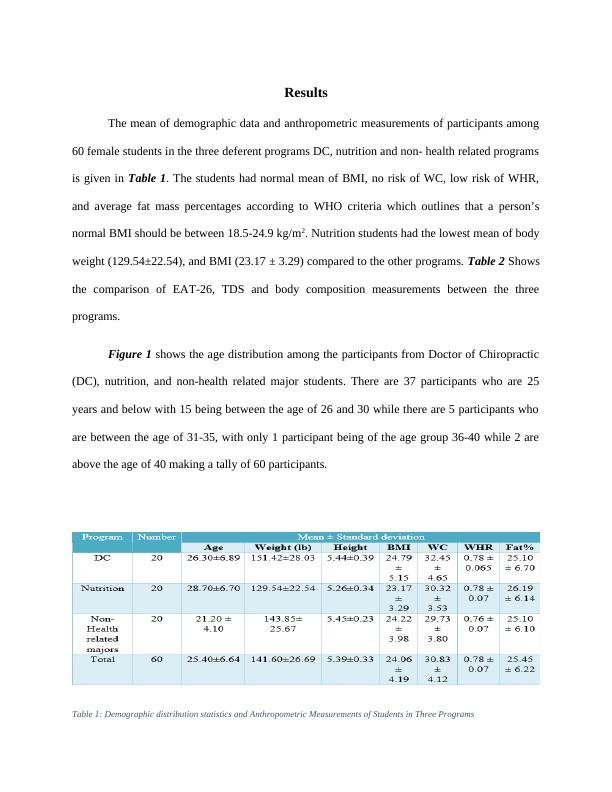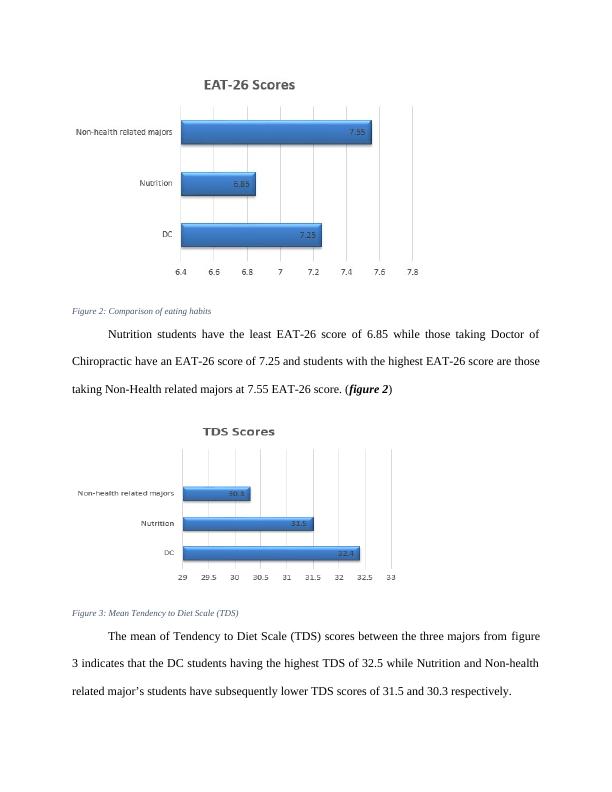Analysis of Demographic Data and Anthropometric Measurements of Female Students in Different Programs
The assignment involves analyzing the age distribution and anthropometric measurements of students in different programs, including Doctor of Chiropractic, nutrition, and non-health related majors.
16 Pages2025 Words153 Views
Added on 2023-04-25
About This Document
This study analyzes the demographic data and anthropometric measurements of female students in different programs. It includes tables and figures that show the mean of BMI, EAT-26, TDS, and body composition measurements between the three programs. The study also examines the prevalence of eating disorders and the correlation between body composition measurements, EAT-26, and TDS scores.
Analysis of Demographic Data and Anthropometric Measurements of Female Students in Different Programs
The assignment involves analyzing the age distribution and anthropometric measurements of students in different programs, including Doctor of Chiropractic, nutrition, and non-health related majors.
Added on 2023-04-25
ShareRelated Documents
End of preview
Want to access all the pages? Upload your documents or become a member.
Comparison of Low and High-Carbohydrate Diets for Type 2 Diabetes Management: A Randomized Trial
|15
|3814
|199




